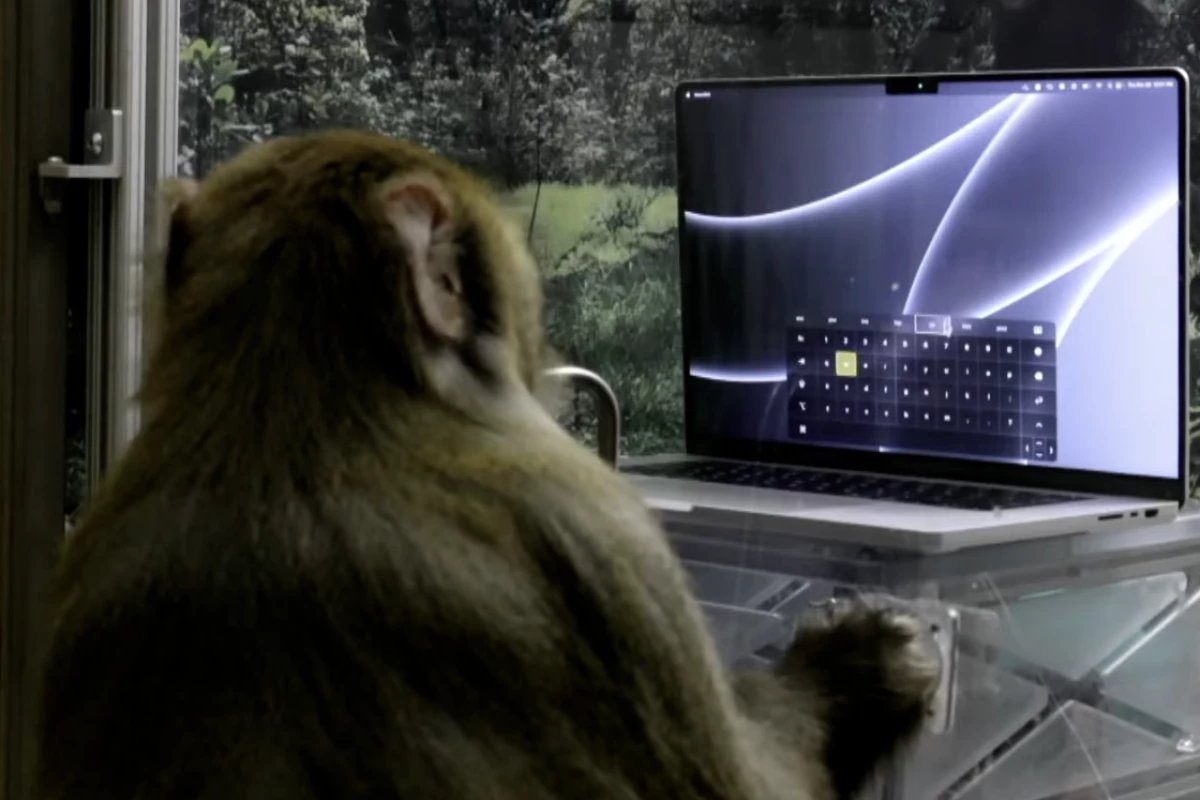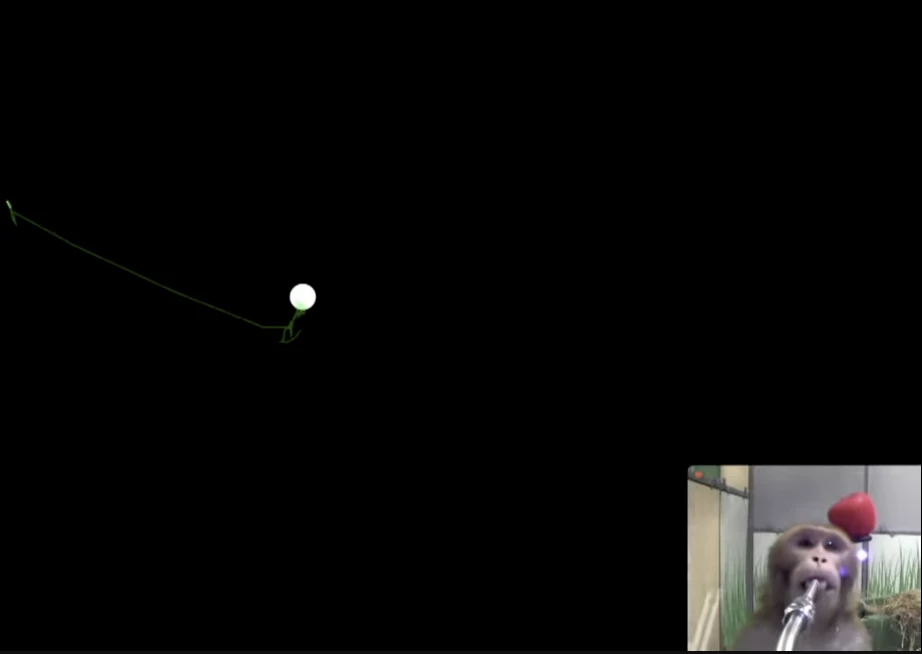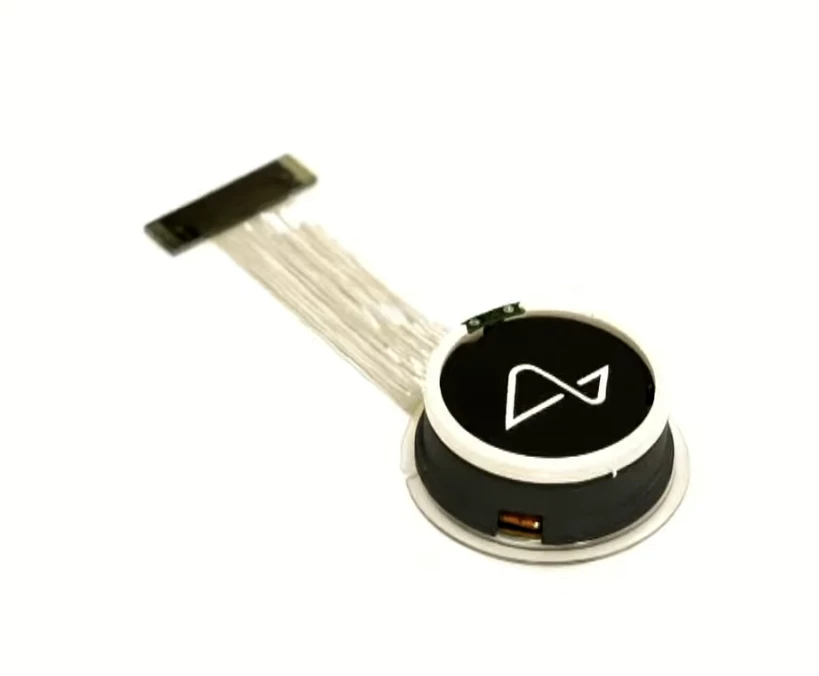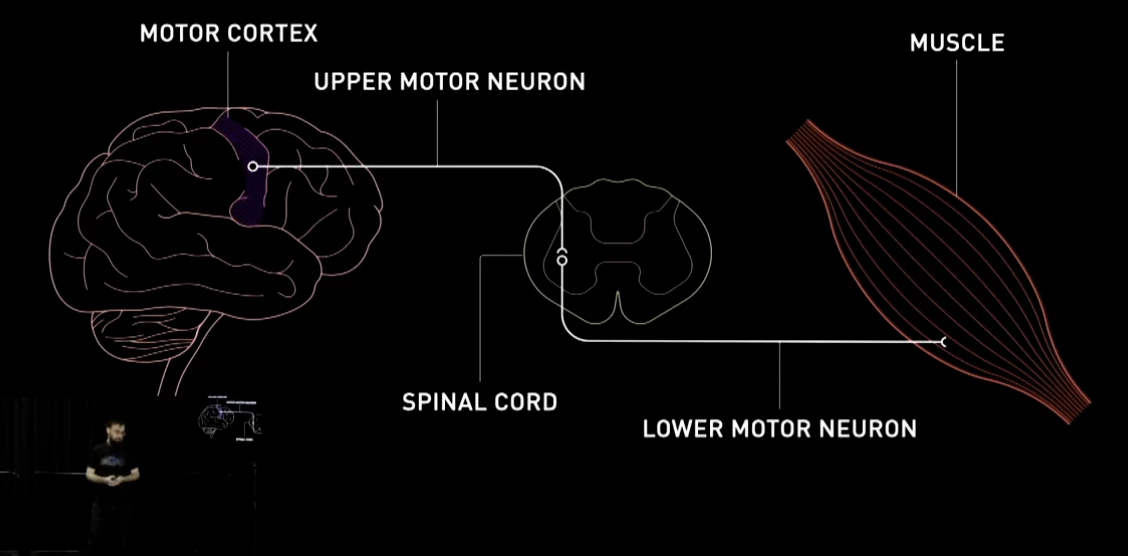Neuralink has given a rare update on its brain-computer interface, including some new telepathic typing from monkeys, a new surgical robot, and early progress toward restoring sight in the blind and returning movement and sensation to paraplegics.
It's been 18 months since Neuralink showed us a telepathic game of monkey pong, and it seems progress has been steady rather than revolutionary.
In a livestreamed event, co-founder Elon Musk and the Neuralink team showed new video footage of a brain-chipped monkey called Sake using the implant to quickly and accurately manipulate a mouse pointer on a screen, clicking on highlighted letters and words to spell out words and phrases nominated by the researchers.
The "N1" implant, a little larger than a US quarter, is designed to replace a chunk of skull in the recipient, such that it's invisible under the skin. It's fully wireless, including charging, and it allows 1,024 channels of two-way communication between the brain and the chip through 64 tiny, flexible needle probes inserted painstakingly into the brain tissue at precise points.
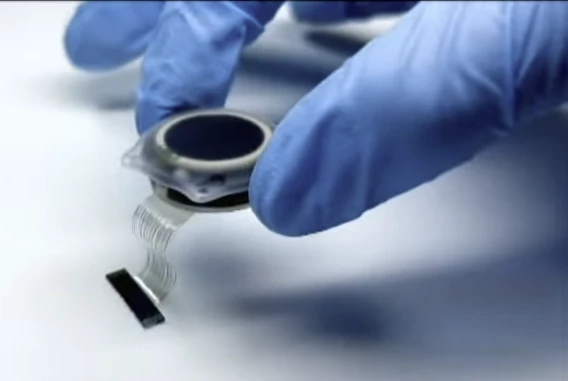
The team introduced the "R1" surgical robot it uses to implant the device. "It's capable of maneuvering these tiny threads, which are only on the order of a few blood cells wide, and inserting them reliably into a moving brain while avoiding vasculature," said the company's VP of Implant, DJ Seo. "It's quite good at doing this reliably."
As the robot demonstrated its ability to target specific brain areas, then deftly grab the tiny probes and jab them into the gloopy "brain proxy" of a demo dummy, Seo went on to say that the entire process of probe insertion should take about 15 minutes. The implants will be both removable and upgradeable.
"With this product, the N1 and R1, our initial goal is to help people with paralysis from complete spinal cord injury regain their digital freedom by enabling them to use their devices as good as, if not better than they could before the injury," said Seo. "Over the last year, this has been the central focus of the company, and we've been working very closely with the FDA to get approval to launch our first human clinical trial in the US, hopefully in the next six months."
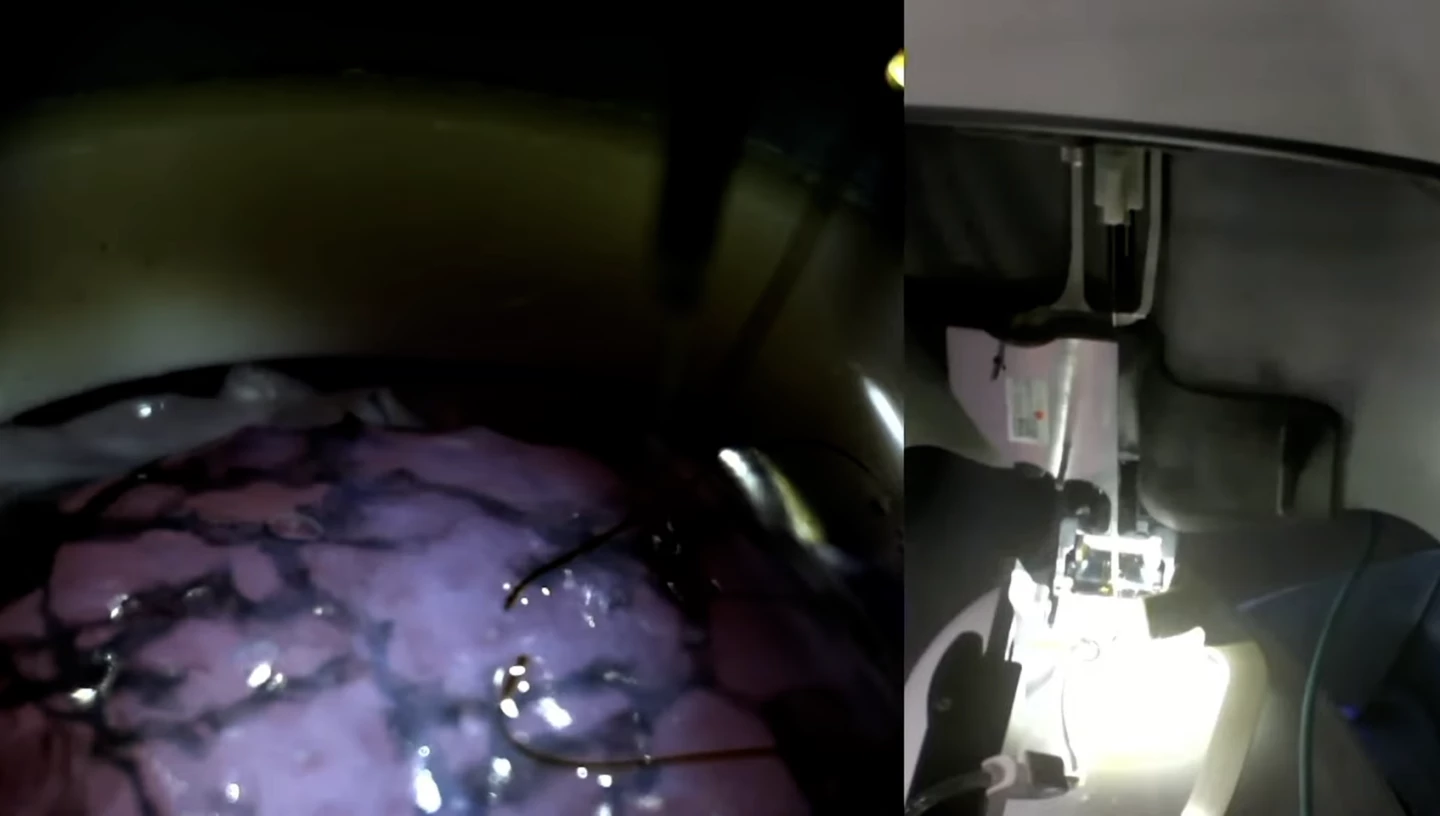
Insertion Hardware team lead Christine Odabashian talked through the process of getting a Neuralink implant installed – a process the company hopes will allow a single neurosurgeon to run several operations at once, handling the skin, skull, protective dura layer and other mechanical tasks while letting the R1 robot do all the needlework into the actual brain.
"It'd be very difficult to do manually," she explained. "Imagine taking a hair from your head, and trying to stick it into Jell-o covered by Saran Wrap. And doing this to a precise depth and position, and doing it 64 times within a reasonable amount of time. A neurosurgeon would probably not like it very much if we asked them to do this ... There's not that many neurosurgeons. Maybe 10 per million people. It takes a decade or more to train a neurosurgeon, and they're generally very busy, and as you can imagine their time is very expensive. So in order for us to do the most good, and have an affordable and accessible procedure, we need to figure out how one neurosurgeon can oversee many procedures at the same time. This might sound crazy, but probably so did laser eye surgery before Lasik made it normal."
Neuralink hopes to follow a similar model as Lasik, using robots to perform only the hardest parts of the operation first, but slowly expanding their capabilities to eventually become highly automated. Thus, the team is working on a CNC-style automated cutting machine that could handle precision skull cutting without damaging the brain.
It's also working on new sub-surface imaging technology that could allow the team to leave the protective dura layer on the brain, while the R1 robot does its needlework. This would solve a number of problems – particularly the fact that when this layer is removed, fleshy growths tend to fill the hole and stick to the brain surface, making it hard to remove the implant at a later date without damaging tissue.
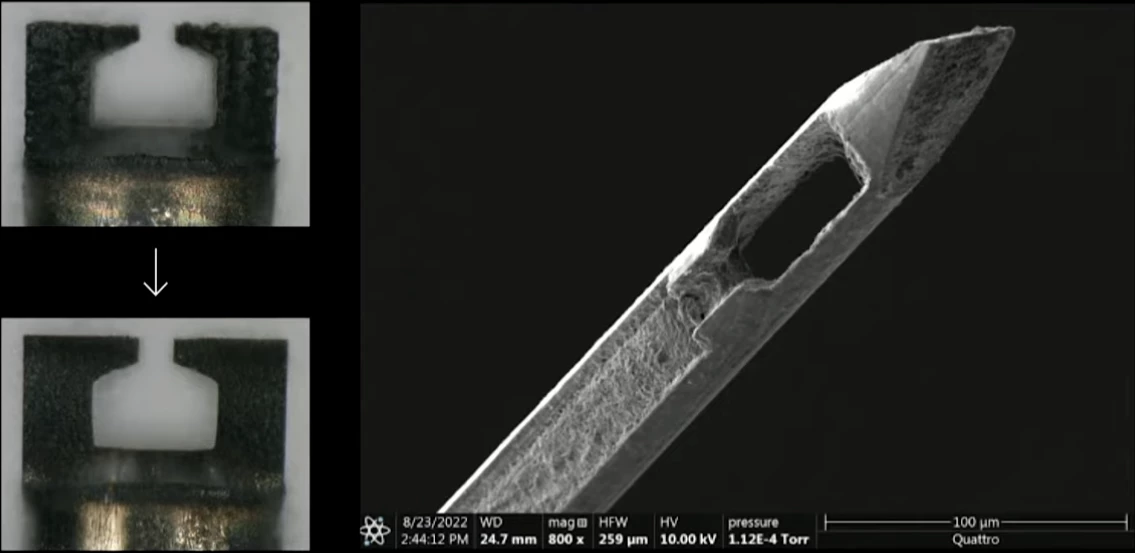
To get through that tough dura layer and insert the implant without exposing any brain tissue, the needles that push the nano-scale sensor threads in needed a complete overhaul. Neuralink's needle design and manufacturing team has done some pretty incredible work inventing not only a new needle – much thinner than a human hair and able to push through the tough, fibrous dura – but also pushing the limits of their machinery to manufacture it quickly and accurately.
"Unsurprisingly, there's no page in the machinery's handbook for this kind of thing, so we dug into the science of femtosecond laser ablation, and figured out a workflow that allows us to use our laser mill much like a CNC mill," said needle manufacturing and design team lead Sam Schmitz. "This allows us to iterate in under an hour for new designs. As a result, the latest iteration can insert through nine layers of dura totaling 3 mm on the benchtop. This is far more than we could ever expect to find in a human, with significant margin."
In terms of future applications beyond just letting paralyzed folk drive their devices telepathically, one thing the team is heavily focused on is vision. The visual cortex of the brain is relatively well understood, and Neuralink's equipment is capable of inserting electrodes deep enough not only to read what's happening in a sighted individual's visual cortex, but to send information directly to the cortex.

In theory, this could eventually mean that the device could take a signal from a camera, and directly stimulate the cortex such that somebody that was born completely blind could gain a rudimentary, low-resolution sense of vision, which could improve as the equipment improves.
The Neuralink team has made a certain degree of progress in this area. It's trained implanted monkeys to move their gaze in the direction of a flashing light in exchange for dollops of banana smoothie, and then started replacing real flashing lights with brain signals sent through the Neuralink implant. Sure enough, the monkeys glance over to the exact spot targeted by the brain implant, as if there's a real flashing light there. This is not a brand new achievement, but it's Neuralink creating the first pixel in what will eventually become a brain-chip display the team hopes will allow the blind to see.
The next target is even more ambitious: restoring motor function after paralysis. Neuralink hopes to use its implants to read motor commands from the brain, and then re-route them around serious spinal cord injuries, into lower motor neurons that could get the messages right through to the muscles.

Again, the team has made some progress toward this goal. Implanting the device in both the brains and spinal cords of pigs, the team began to decode which patterns of brain activity signaled the motor intentions that resulted in which patterns of electrical activity in the lower spinal cord. The researchers were able to identify the patterns responsible for certain movements, and they were able to replicate some of them as well, directly stimulating the spinal cord to cause, for example, muscle contractions that would lift the pigs' legs up.
The team isn't just targeting motor signals, it also wants to restore sensation by re-routing messages in the opposite direction back to the brain. This would require additional implants in the sensory cortex. "Putting those two loops together, we have motor intention decoded from the brain, used to stimulate the spinal cord, causing movement, and then the sensory consequences of those actions, being recorded in the spinal cord, to stimulate the brain, causing perception," said Neuralink's Head of Next-Gen Joseph O'Doherty. "Now, we have a lot of work to do to achieve this full vision, but I hope you can see how the pieces are all there to achieve this."
You can nerd out on this stuff by enjoying the Neuralink team's entire presentation below. It's more than two hours long, and nearly an hour of it is Q&A.
Source: Neuralink
